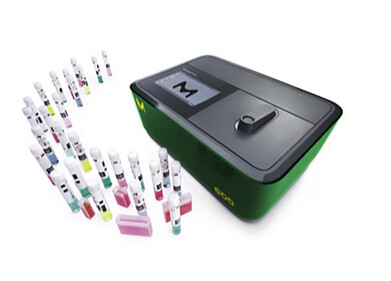Laboratory products
University Research Group publishes data on Metallic Nanoparticles as part of a program to develop Sustainable Nanomaterials
Oct 04 2013
NanoSight reports on how the University of Cordoba has applied Nanoparticle Tracking Analysis, NTA, to improve the understanding of the behaviour of silver colloids used in the development of sustainable nanomaterials.
Dr Rafael Luque is a research member in the Department of Organic Chemistry on the Campus de Rabanales of the University of Cordoba in Spain. The main research goals of his team include the preparation of nanoparticle systems for potential utilisation as catalysts and in other applications (e.g. antimicrobial and photocatalytic activities). They are focused on the design of various nanomaterials for a broad range of applications.
Dr Luque used NTA to demonstrate the successful preparation of silver colloid nanoparticles using biopolymer derived capping agents. It proved most successful resulting in a new paper published by RSC Advances entitled "Evaluation of biomass-derived stabilising agents for colloidal silver nanoparticles via nanoparticle tracking analysis (NTA)." Here, Dr Luque was able to confirm the presence and distribution of the nanoparticles by NTA using transmission electron microscopy, TEM.
Describing his work, Dr Luque said "We have extensively employed TEM to ascertain structures and NP sizes of all types of materials. This is one of the most widely employed techniques for NP characterisation in terms of size and shape. With our discovery of NTA, we now see a methodology that is robust, simple and quick to use. This simplicity and effectiveness to generate results in our highly focused projects is a very welcome advantage."
Discussing the research paper in more depth, Dr Luque described how NTA was used to differentiate between the capping efficiencies of various biomass-derived stabilising agents (e.g. starch, alginic acid and a waste-derived biorefinery sugar syrup) of aqueous colloidal silver suspensions. The results indicated that the use of a complex, biorefinery hemicellulosic-derived syrup containing a mixture of C5 and C6 sugars, as well as oligomers, provided comparable capping and stabilisation properties to those of the most efficient pure polysaccharides including alginic acid. He concluded, "These findings illustrate the potential of waste-derived feedstocks for the stabilisation of nanoparticles in solution."
Digital Edition
Lab Asia 31.6 Dec 2024
December 2024
Chromatography Articles - Sustainable chromatography: Embracing software for greener methods Mass Spectrometry & Spectroscopy Articles - Solving industry challenges for phosphorus containi...
View all digital editions
Events
Jan 22 2025 Tokyo, Japan
Jan 22 2025 Birmingham, UK
Jan 25 2025 San Diego, CA, USA
Jan 27 2025 Dubai, UAE
Jan 29 2025 Tokyo, Japan



















